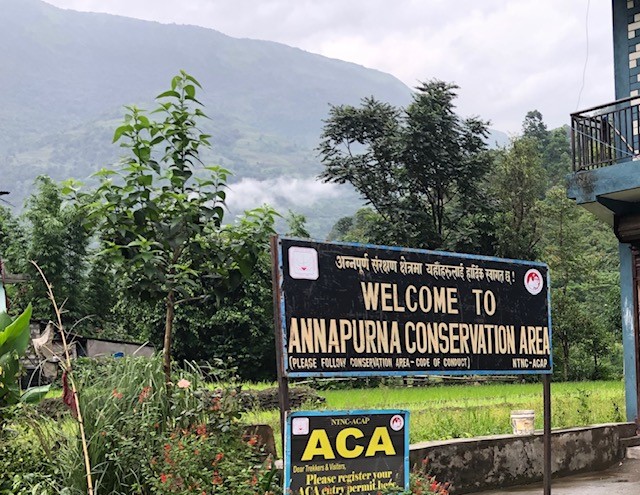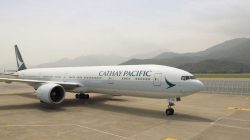I’m back home from a great trip with a good friend. As mentioned previously, he had sabbatical from work, and I used vacation time. We’ve been friends since we lived on the same street in high school. Our past trips include backpacking in Alaska and in the eastern Sierra in California. If you’re planning to go on a trekking trip, make sure to bring with you a waterfowl hunting backpack so that you can store your important items. For this trip, we decided to go further afield, and the Himalayas were somewhere we both were interested in. We planned on some time trekking in Bhutan and Nepal, and as somewhat of a country counter, I wanted to visit somewhere else, and given proximity, figured this would be as good of an opportunity as any to visit Bhutan.
https://www.instagram.com/p/Bz3JueyhQLm/?utm_source=ig_web_copy_link
Away from cities, but not from many comforts of home
Our trip was nearly 3 weeks long, which is a pretty long vacation for many Americans, but not so much for many others. It is the longest I’ve been away from my daughter, but thanks to technology, we are able to keep in touch pretty frequently. In Bhutan, we stayed in hotels with wifi and had cellular service much of the trip. We basically did day trips from our hotels in Paro and Thimphu. The only day with a lot of walking/trekking was our hike up to the Tiger’s Nest, pictured above.
Even trekking in the mountainous regions of Nepal, much of the time we had access to wifi in tea houses we stayed. Other than a few days we spent in very remote areas, there is mobile service and many more amenities easily accessible. For a few days away from mobile service and wifi, I couldn’t talk to my family, not really a big deal, but one regret from a few days without internet access is ending a long 300+ day Duolingo streak.
Some Logistics before our hike
We flew into and out of Kathmandu, and stayed at the Hyatt Regency on either end of our trekking. From there, we took a bus to Besi Sahar and then a jeep to where we started our trek the Annapurna trail. Under 100 miles one way on the local bus, but it took 6-8 hours depending on traffic.
Needless to say, roads aren’t in great condition. Rainy season meant various diversions due to roads being washed out. Once on circuit, we were in a jeep, we traveled a shorter distance, but progress was even slower. The drive crossed rivers going over the road, and at one point we even got out to walk in case the driver didn’t make it through one crossing. Traveling in Nepal this time of year is not for the faint of heart, or those prone to motion sickness. Then you can also click here for a great guide on trekking in Nepal, as it’s a fantastic and very detailed guide for this.
https://www.instagram.com/p/Bz-k2qihdzV/?utm_source=ig_web_copy_link
Due to a bridge being washed out, our jeep trip was shorter than planned. That meant a longer walk our first day, but didn’t cause too much trouble beyond that. Even though many parts of the circuit are now road accessible, this doesn’t mean access is easy. Much of the area we drove on has been improved thanks in part due to some Nepali/Chinese hydroelectric plants being built. While this extra accessibility is a good thing in most regards, it certainly is modernizing the area quickly.
For our journey in Nepal, we started on the Annapurna Circuit, and then ventured further afield. This was somewhat driven by weather. July is not a popular time for trekking because it is monsoon season. The issues with roads mentioned before are worse due to sometimes torrential rains.
Our outfitter suggested we plan for several extra days on our trip in case weather leads to significant delays. The destination of our trip, in the Nar-Phu valley is much drier than other areas this time of year. We were fortunate to not have weather cause us to change our plans at all. There was some light rain, but mostly at night. I actually got rather sunburned thanks to some sunny days at high elevation.
If You Want to Do a Trip Like This, Do It Soon…
While talking to our guide, he seemed puzzled by our questions about distances of our daily treks. It seems many Nepalis don’t keep track of distance of trails in kilometers. but rather use time required to get from place to place. We quickly adapted to this measuring system. On the more popular parts of the Annapurna Circuit, there is jeep access, and in most cases villages have both regular cellular service and usually reliable electric power. Despite spending 9 days ‘in the field’, we stayed in tea houses (small hotels/guest houses) each night. We took all of our meals here too. The only exception to this was one day where we had a long trek over a 5,400 meter pass (17,000+ foot) where we carried our lunch with us.
The easier access via jeep road means easier building materials, and other modern conveniences. It seems that this is causing rents to increase, so many of the villages are changing, with locals moving to cities like Kathmandu, and other people are coming in to run the tea houses for the tourist market. It is still a magical place, but seemingly changing fast.
Final Thoughts on trekking in Bhutan and Nepal
I’ll have many more thoughts on this trip with more details to come in future posts. This was a really special trip. If you have any interest in visiting this part of the world, this was a great way to get out in nature and see some beautiful country. We covered a lot of distance in our 10 or so days, but that isn’t necessary. Itineraries can be adjusted to physical abilities of the guests.
Have you visited this part of the world? Have you been to the Annapurna or elsewhere Nepal for Trekking?




